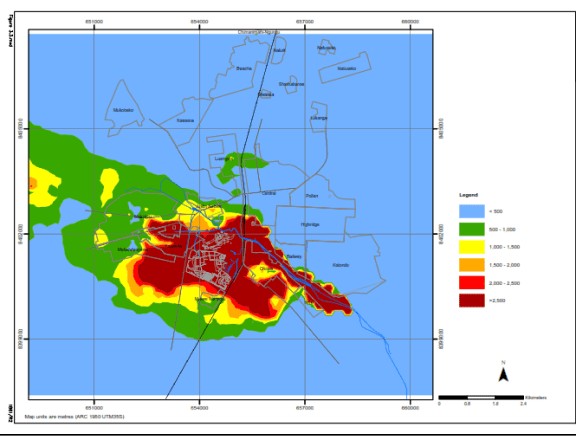Mining in Kabwe
Kabwe is the fourth largest city in Zambia and is home to over 225,000 residents. It is the capital of the Central Province and the seat of the Kabwe District.
Kabwe was once the site of one of the continent’s largest lead mine and smelting operation. Rich deposits of lead and zinc were discovered there in 1902, in what was then Northern Rhodesia. Until Zambian independence, Kabwe was named “Broken Hill” after the Australian lead mining town of the same name.
Mining commenced in Kabwe in 1906 and the Mine continued to operate for almost 90 years until it was closed in 1994. During the lifetime of its operations it produced many tens of thousands of tonnes of lead and zinc. It was the only lead mine and smelter in the town.
The Mine’s operations and methods changed over time. The Mine’s processes responsible for the emission of lead-containing dust and/or fumes, included the following:
- Lead-bearing ore, containing compounds of lead, zinc and other elements, was mined from the earth with machines.
- The ore was crushed in the primary and secondary crusher and concentrated to remove waste matter.
- The concentrated ore was passed through a sinter, which burnt off sulphides, producing lead oxide and zinc oxide.
- The oxides were passed through a crusher.
- The crushed oxides were then passed through a smelter, resulting in liquid lead and lead vapour which were purified in large kettles and tapped off at the base of the furnace.
- Lead-bearing waste rock, so called kettle dross and tailings from these processes were deposited on mine dumps.

Lorem Ipsum
This map was produced by the Kabwe Scoping and Design Study (KSDS) of the Copperbelt Environment Project in 2006. It illustrates the interpolated distribution of lead in soils, in areas surrounding the site of the former Kabwe lead mine and smelter. Large areas of Chowa and Kasanda, extending into Makululu, indicated soil levels higher the 2,500 mg/kg. The study found that all areas tested across these communities exceeded levels generally regarded as acceptable by international authorities, with regards to residential areas. Also available in Bose-O’Reilly (2018).

Lorem Ipsum
All of these operations were conducted within or in the vicinity of the Mine premises, located in close proximity to residential areas. Over the course of the 20th century, the Mine’s owners developed townships around the mine. Black residents lived in the most undesirable areas, to the west of the mine, downwind of the mine dumps and the smelter. By the early 1970s, there were sizeable communities of poor, black residents and mineworkers living in the townships of Kasanda and Makululu, downwind of the mine.
“It is a revealing indication of the attitudes of former administrators to find that workers' homes and a school lie within the polluted area, in the path of the prevailing wind.”
Lorem ipsum dolor sit amet, consectetur adipiscing elit, sed do eiusmod tempor incididunt ut labore et dolore magna aliqua. Ut enim ad minim veniam, quis nostrud exercitation ullamco laboris nisi ut aliquip ex ea commodo consequat. Duis aute irure dolor in reprehenderit in voluptate velit esse cillum dolore eu fugiat nulla pariatur. Excepteur sint occaecat cupidatat non proident, sunt in culpa qui officia deserunt mollit anim id est laborum.
“It is recognised by all who have experience in mining that a township existing close to a mining location is not desirable, and while benefits of little real value are obtained, the interests of the Mine and the Public are, sooner or later, bound to clash in many ways…refuse, fumes and smoke from the furnaces of the mine plant, as well as water contaminated by the mining and metallurgical operations are drawbacks to which those employed in mining are of necessity always exposed, but which would be objected to by the outside public”

Overview of AASA’s Involvement
The Mine is alleged to have been part of the Anglo American group from 1925 until 1974, during which time it was one of the most productive mines in the region. According to the Claimants’ experts approximately two thirds of the Mine’s total lead production was produced during the period when it was allegedly an Anglo American mine (1925-1974) and a corresponding proportion of the lead pollution present in the environment of Kabwe District today was caused during this time.

